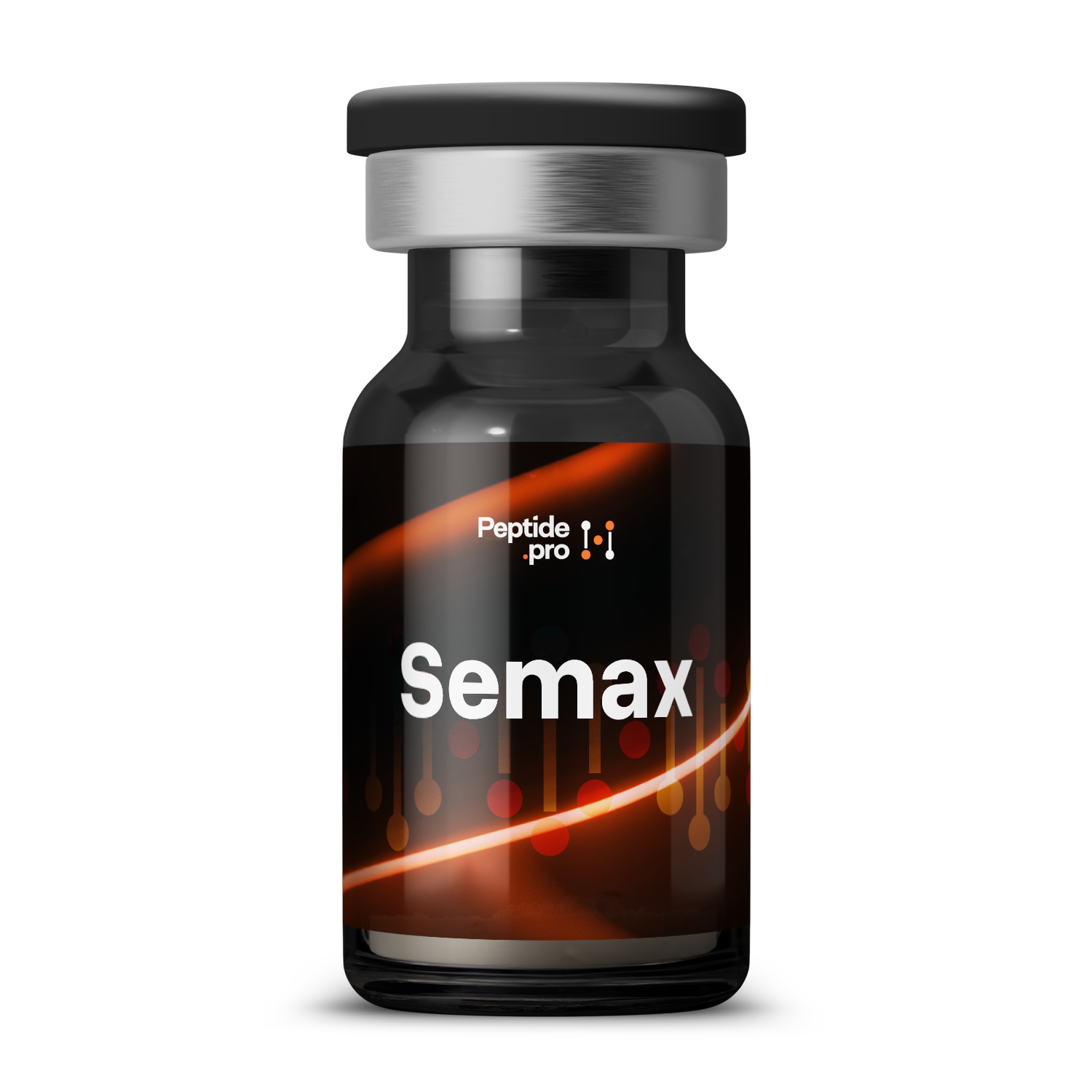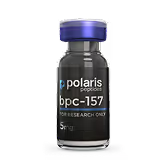Semax
Semax is a seven–amino-acid peptide that offers rapid neuroprotective and cognitive-enhancing effects. It boosts brain-derived neurotrophic factor (BDNF) to support neuron health, modulates key neurotransmitters like serotonin and dopamine for improved mood, and reduces inflammation after injury. In clinical studies, Semax has sped up recovery after stroke, enhanced attention and memory in healthy volunteers, and shown promise for treating cognitive decline and post-concussion symptoms.
Compound Overview
About the product
The peptide sequence is Met-Glu-His-Phe-Pro-Gly-Pro with an N-terminal acetyl group to increase stability and half-life in the bloodstream. It contains only natural L-amino acids and no non-natural modifications beyond acetylation. Semax is synthesized by Fmoc solid-phase peptide synthesis and purified by preparative HPLC to ≥95 % purity. Mass spectrometry confirms correct sequence and acetylation.
Semax upregulates brain-derived neurotrophic factor (BDNF) expression and modulates glutamatergic and serotonergic neurotransmission in the central nervous system. It also displays antioxidant and anti-inflammatory properties, reducing neuronal apoptosis after ischemic injury. These combined actions support neuronal survival, synaptic plasticity, and functional recovery. Clinical pharmacology studies show improved cerebral blood flow in affected brain regions.
Semax benefits are studied primarily in the areas of neuroprotection and cognitive support. In human stroke trials, Semax administration improved neurological scores and reduced infarct size compared with standard care. In healthy volunteers, it enhanced attentional performance and working-memory metrics after single and repeated dosing. Ongoing research evaluates its role in mild cognitive impairment and post-concussion recovery.
Adverse events reported in clinical studies are minimal, with occasional mild nasal irritation or headache following intranasal dosing. No serious systemic safety signals have emerged in trials lasting up to several weeks. Semax does not affect blood pressure or heart rate significantly. Safety in pregnancy, lactation, and long-term administration beyond study durations remains unestablished.
Semax is produced via Fmoc solid-phase peptide synthesis on a resin support, followed by N-terminal acetylation. After cleavage and deprotection, it is purified by preparative HPLC to research-grade purity. Analytical HPLC and mass spectrometry verify peptide identity, purity, and correct acetylation. Manufacturing adheres to peptide-compounding standards under good laboratory practice.
Semax is approved for medical use in Russia and select CIS countries for stroke and cognitive disorders and is available by prescription there. It is not approved by the U.S. FDA, EMA, or other major Western regulators and thus is investigational elsewhere. Research-grade Semax is obtained under clinical-trial or equivalent frameworks. No over-the-counter or prescription formulations exist outside its approved regions.
Semax dosage in clinical protocols has ranged from 0.1 to 0.3 mg/kg per day intranasally, divided into 6–8 administrations, for 5–10 days in acute stroke. For cognitive studies in healthy subjects, single doses of 100–300 µg thrice daily for up to two weeks have been evaluated. No standardized dosing guidelines exist outside these trial protocols. All administration must follow approved investigational designs.
- Do administer via intranasal spray to ensure central nervous system delivery.
- Do follow trial-specific dosing schedules and duration.
- Don’t combine with other neuroactive agents off-protocol.
- Don’t use in pregnancy, lactation, or unapproved indications.
- Q: How quickly does Semax act?
- A: Cognitive effects can appear within 1–2 hours of intranasal administration.
- Q: Can it prevent stroke damage if given late?
- A: Benefits are greatest when started within 6–12 hours post-stroke; later efficacy is under study.
- Q: Does it require monitoring labs?
- A: No routine laboratory monitoring is specified in current protocols.
For research use only. Not approved for medical use.


